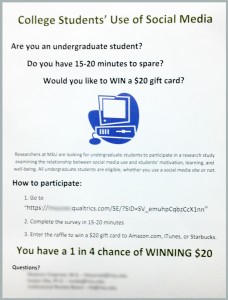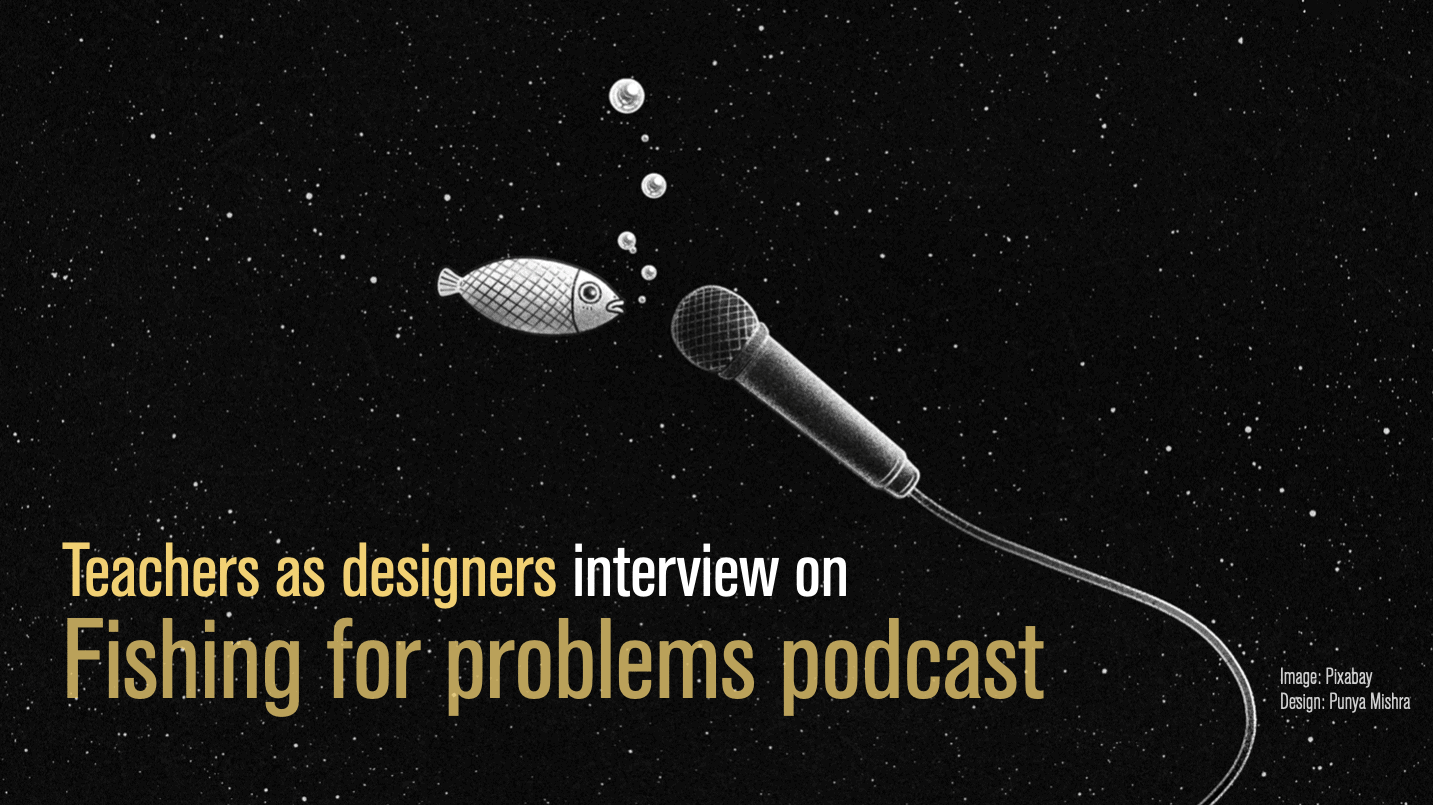Note: This post has been edited somewhat to (a) clearly hide the url, which I had not done a good job of before; and (b) to add a few suggestions in the last paragraph for some strategies to make it easier for the participants to take part in the study. (September 18, 2013).
There are many pitfalls one can face while engaged in conducting research with humans. For instance, if you are designing a survey it is important to make it easy for participants to actually complete it. Matt Koehler pointed out to me one person who just got it totally wrong.
Here is a flyer, recruiting participants for a study on college students’ use of social media, that has been posted near the elevators here at Erickson Hall.
 What stands out (to both Matt and me) was the fact that the student (name blurred) running the study had included an URL for the survey in the flyer itself. Here it is in greater detail (with some details blurred).
What stands out (to both Matt and me) was the fact that the student (name blurred) running the study had included an URL for the survey in the flyer itself. Here it is in greater detail (with some details blurred).
Now think for a moment what this student was expecting users to do. They needed to memorize or write down the complicated address (http://blahblah.qualtrics.com/SE/?SID=PQ_HLpCqrqC45nn) and go back to their office or computer and then type this sequence of letters in and then participate in the survey. Just how many people would be willing to do this? Imagine actually going through the process and making just one mistake in typing out that crazy list of characters and getting to a “404 Not Found page!”
It would have to be someone highly motivated to help you with you research to go through all this.. and frankly nobody I know is that motivated.
Now, designing your research instrument (in this case a survey) is just half (an important half but just half none-the-less) of the research enterprise. The end goal is ending up with data that you can then analyze to answer the research questions you started with. The approach shown here just about ensures that you will not have any data in hand to test your hypotheses or theory!
There many-many ways this process can be made easier for the participants—and I do hope the student researcher is also looking into these alternative methods. A few ways could be to (a) take advantage of social media itself to contact participants; (b) a mass emailing to MSU students with the link embedded; or (c) just go ahead and buy a simple domain name that would be easy to remember. A register.com search shows that msusocialmedia.com is available, as is msusocialmediastudy.com! The current approach, quite surely, will not work!





0 Comments